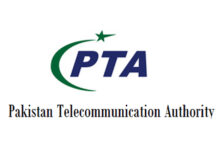ISLAMABAD: Pakistan recorded the second lowest share of users attacked by web-borne threats in the Middle East, Turkey, and Africa (META) region during the first quarter of 2025, according to a new report released by global cybersecurity firm Kaspersky.
The findings, published by Kaspersky’s Global Research and Analysis Team, highlight key cybersecurity trends observed globally and in the META region, including ransomware, advanced persistent threats (APTs), supply chain attacks, mobile vulnerabilities, and developments in AI and IoT-related threats.
The report notes that Türkiye and Kenya reported the highest number of users affected by online threats during Q1 2025. They were followed by Qatar, Nigeria, and South Africa. Saudi Arabia had the lowest share, while Pakistan followed with the second lowest number of users impacted by web-based attacks.
Kaspersky analysts are currently monitoring 25 active APT groups in the META region. Among them are SideWinder, Origami Elephant, and MuddyWater—groups known for targeted attacks with evolving techniques, including mobile exploits and detection evasion methods.
Ransomware continues to be a significant threat worldwide. Globally, the share of users affected by ransomware rose by 0.02 percentage points to 0.44% between 2023 and 2024.
In the META region, ransomware infections grew by 0.07 points to 0.72% in the Middle East, by 0.01 points to 0.41% in Africa, and by 0.06 points to 0.46% in Türkiye.
Kaspersky notes that while ransomware is not typically distributed on a mass scale, attackers are increasingly targeting high-value entities.
“Ransomware is one of the most pressing cybersecurity threats facing organizations today,” said Sergey Lozhkin, Head of the META and APAC regions at Kaspersky’s Global Research and Analysis Team. “To stay secure, organizations need a layered defense: up-to-date systems, network segmentation, real-time monitoring, robust backups, and continuous user education.”
The report underscores the importance of proactive cybersecurity strategies across both public and private sectors in the face of evolving digital threats.























